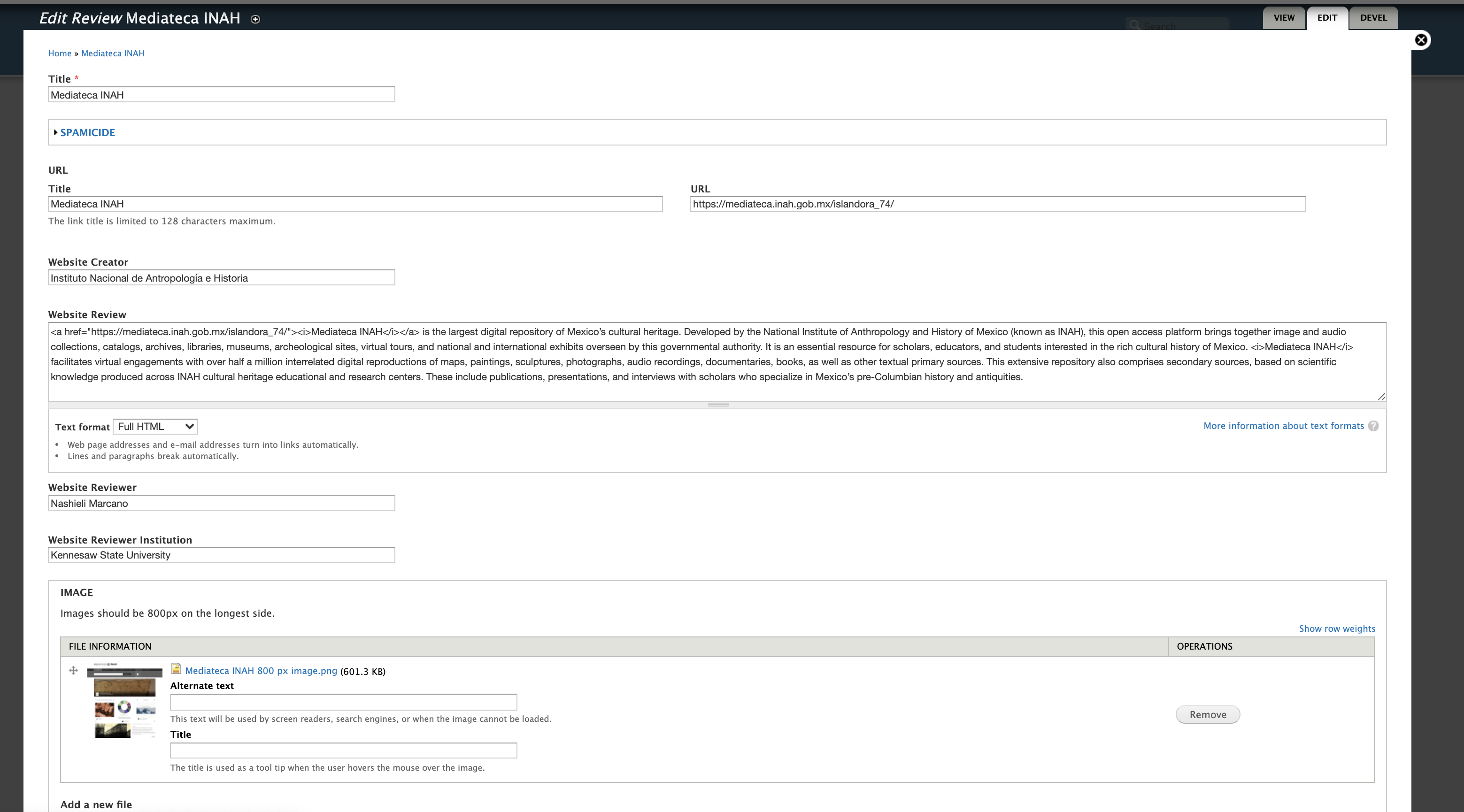During my internship this semester with RRCHNM, I have been reviewing websites for the World History Commons project. Such activity can be effectively done by making use of a review criteria that guides me through the process of conceptualizing online history sites, assessing the quality of the sources they present, and guide instructors of history on the functionality and adequacy of the site for their teaching. Through my reviewing, I get to improve my writing skills, engage in a critical discourse that advances both my librarianship profession and the digital humanities. I am learning how to strike a balance between applying a consistent review criteria and assessing each site on its own terms. This experience is also giving me exposure to project management, infrastructures, workflows, and timelines.

In terms of technologies, I am becoming versed at using Drupal, the free and open-source web content management platform where the World History Commons reside. It is a highly customizable interface with many accessibility options that requires me to practice and enhance my HTML skills. And since part of the content creation involves incorporating images to be used as thumbnails, I am developing new skills in photo editing basics using the Photo app on Mac.

A short activity that is separate from the World History Commons was to beta-test DataScribe, a newly-created platform by RRCHNM. As a structured data transcription module for the Omeka S platform, DataScribe will help scholars collect sources, particularly government and institutional records and forms, transcribe or turn them into datasets to be analyzed/visualized. What’s so cool about this platform is that scholars will be able to display transcriptions alongside the source items and metadata and publish their findings on the web. During the beta-testing of DataScribe, I learned about item and record browsing, advanced searching, adding records to items as a transcriber, and test the following aspects:
- button functionalities
- media viewer
- inputting data in forms
- recording actions
- reviewing transcriptions
- flagging records
Another project in which I will soon be involved is in the production of an interview where I get to discuss my process of creating the prototype site “More to This Than Meets the Eye: American Imaginings of the Caribbean Through 1898 War Political Cartoons.” This will be a chance to both master new skills in interview script writing and identify methods to best articulate my digital humanities activities. I understand the goal is to create a product that engages the interviewer in a conversation and effectively convey elements of my project without sounding rehearsed or canned. I look forward to creating my script and getting more involvement in the production of this interview, which will be aired during Professor Kelly Schrum’s DHP course, HIST 689: HIST 689 Teaching and Learning History in the Digital Age.